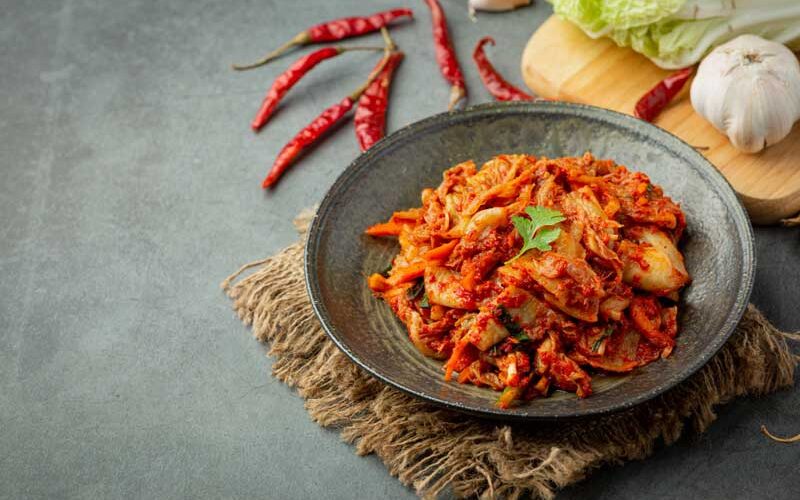There are various foods and food habits in the world, and there is also various topography. Is there a correlation between these two? And why do Asians enjoy eating spicy food?
Geographical factors affecting food habits
- Climate
It is the climate that determines how many growth seasons there are in a year and how long the growth season is, and it also determines the regions. The region with the largest amount of growth and the longest cycle has a temperate climate. Temperate regions (East Asia, Hawaii, etc.) can be harvested three to four times a year, and the climate of temperate regions helps crops that take a long time to ripen faster. In hot or cold climates, the cycle of crops is mostly limited to once a year, and the growth period of crops is also short. Also, the crops that can be grown depend on the climate. Some crops withstand only moderate cold and heat, while others are suitable for extreme temperatures that are very cold or hot.
- Precipitation
It is average precipitation that has a significant impact on local food production and habits. In hot and dry areas like Mexico, spicy peppers are suitable for cultivation, and countries with constant and moderate precipitation (Central European countries, Central and Western America, etc.) are perfect environments for cultivating leafy green vegetables, lettuce, and grains. On the other hand, rice crops are very suitable for humid conditions, making East Asia the perfect climate for them to obtain several rice crops a year. Drought-resistant squash, some gourds, and corn are suitable for very dry climates (Southwestern United States, India, etc.). The types of livestock they can raise are also affected by precipitation, which affects dairy and meat in the area.
- Soil Quality
One important factor that determines the success of crop cultivation is the quality of the soil and the amount of minerals in the soil. Therefore, the quality of the soil also has an important influence on local food habits. In addition, crops must be rotated regularly for successful cultivation. Soybeans, for example, replace the nitrate that corn discharges into the ground, while corn needs high concentrations of nitrate in the soil. In areas where corn is commonly grown, it will not be difficult to find beans. Many crops cannot be grown in dry and poor soil, while various crops can be grown in wet and fertile soil.
- Topography
It is the local topography that affects not only the livestock that can be raised but also the types of crops that can be grown. The prairie area produces large amounts of grain on a large site, while coastal and island-rich areas produce large amounts of fish, other seafood, and fruits. Chicken, which can easily be raised in rocky areas, is a popular food, although deep-rooted crops and cattle cannot be grown in rocky areas, such as in the case of mountains in the southwestern United States (Hughes, 2017).
Why Asians eat spicy food
- The Origin of Spicy Food
- Where
Some claim that the origin of spicy food is in China, while others assert that it is in India. However, it’s unclear where exactly it came from. Spicy cuisine is said to have been created to enhance flavor and keep food from going bad.
When you wish to destroy bacteria and stop food from rotting, spices can be highly useful. All 30 different plant species can be hampered in their growth by certain spices, such as oregano and allspice. Ten times as many countries harvest spices than are really using them.
- When
There is no definitive response to this because the origins of spicy food in Asia are so varied and intricate. But if you go back a few centuries, you can find that spices were employed in Asian cuisine in the earliest documented instances, some of which came from China and India. It is believed that traders who brought unique and novel spices from various regions of the world contributed to the spread of spicy food throughout Asia. Local cuisine evolved over time as different spices were introduced, yielding a wide variety of mouthwatering and distinctive meals. People in Asia today appreciate spicy food and are accustomed to it.
Peppers are among the spices that have shown success in a variety of settings. Beginning in the early 1990s, Chinese traders who were attracted to its fiery flavor introduced it across Asia. Chili peppers were first brought into India by Portuguese people in the late 16th century. Many spices are utilized in hot areas, according to Portuguese experts, because they have antibacterial characteristics that increase lifespan, health, procreation, and the removal of germs from food. Any cuisine can have a distinctive flavor and spice character by adding chili pepper. Spice can heat up any cuisine and is used in a variety of recipes (Fu, 2023).
Conclusion
One of the key elements affecting agriculture is climate change. In general, the environment influences the kinds of crops that can be grown as well as the cattle business. Temperature, sunlight, precipitation, and soil quality have the most effects on the climate. These have a significant impact on agricultural animals and plants. Additionally, it is crucial for insect management. By determining how animals and vegetables are raised and grown, it influences the region’s food culture and characteristics. Since crops and livestock like cattle and pigs can be grown and raised in places with large grasslands and a lot of seas, for instance, climate and traditional cuisine are closely related. However,’there is only speculation that spicy food may have been used because it prevents it from spoiling.
References
Hughes, L. (2017). Geographical Factors Affecting Food Habits | Synonym. [online] classroom.synonym.com. Available at: https://classroom.synonym.com/geographical-factors-affecting-food-habits-12511541.html [Accessed 23 April. 2023].
Fu, Xinya . “When Did Spicy Food Become a Thing in Asia? – Aberdeen Street Social.” Www.aberdeenstreetsocial.hk, 6 March. 2023, www.aberdeenstreetsocial.hk/when-did-spicy-food-become-a-thing-in-asia/. [Accessed 23 April. 2023].
